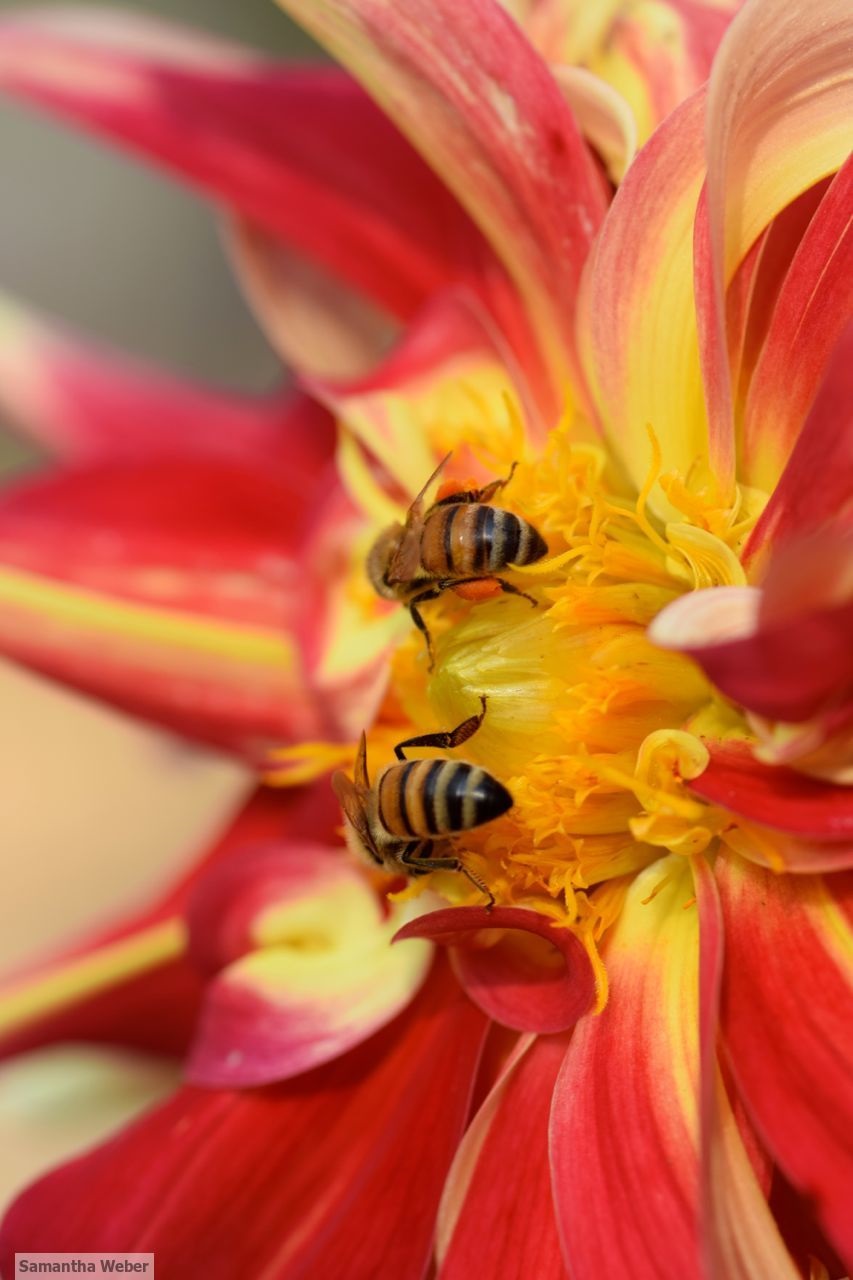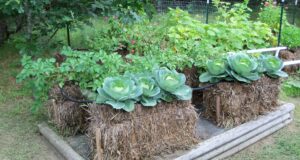“Almost every successful person begins with two beliefs: the future can be better than the present, and I have the power to make it so.” David Brooks
Here’s the conundrum: 1. I’m a conservation biologist. Therefore, I’m into sustainable living. 2. We are in a serious drought. And even when it’s not drought-y here, it’s a pretty darn hot and dry place. 3. Our water comes from a well, and I really don’t want to run out of water. It’s already happened to some people around here. 4. Nevertheless, I want a garden.
Correction: I need a garden.
Click on photos to enlarge.
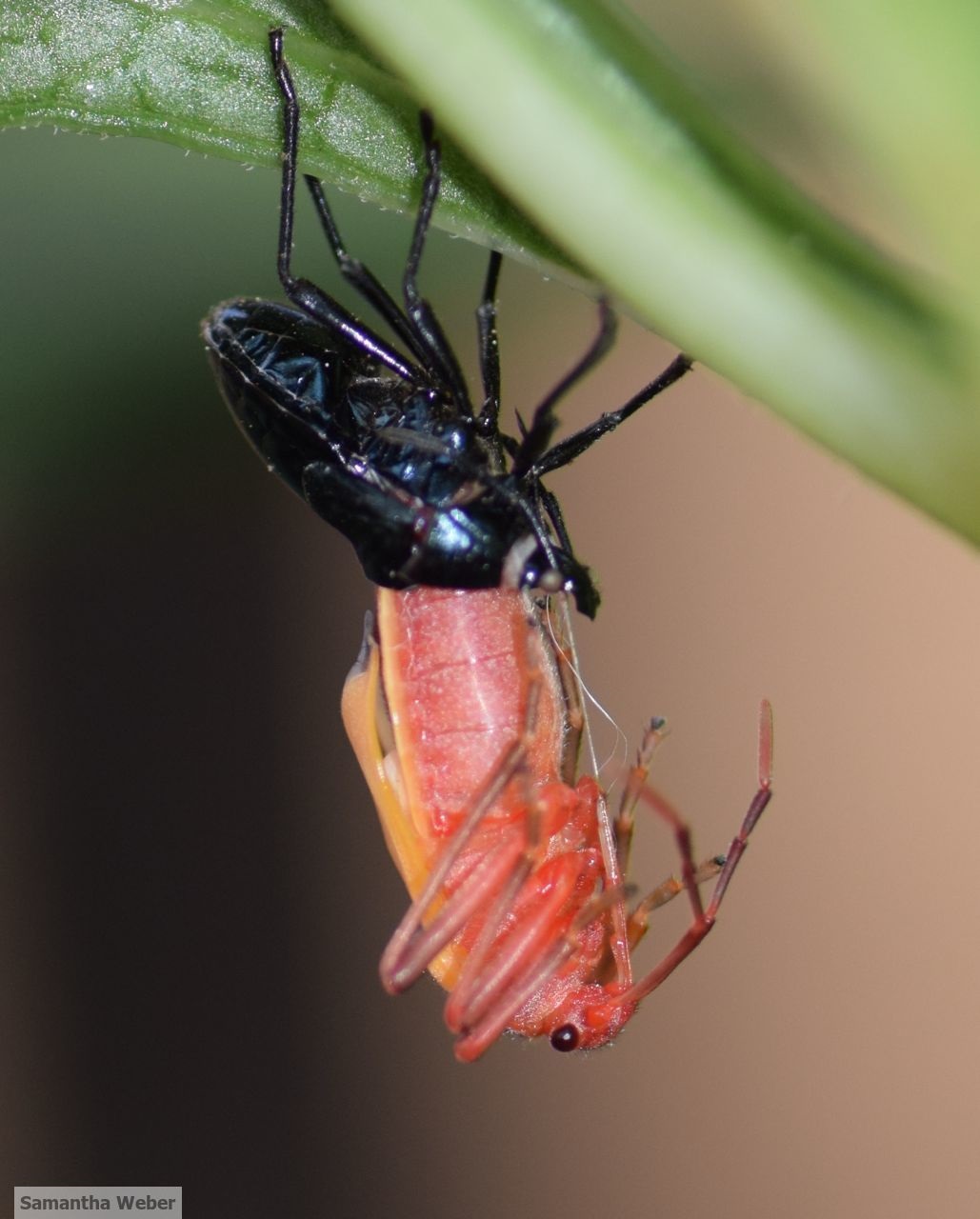
Frankly, I don’t do well in heat. Maybe it’s because my ancestors are from cold, dark places, but 100 degree weather is rough. Gardening saves my bacon.
Gardening in the long, hot days of summer brings me the glory and constant surprise of nature. Plants, flowers, bugs and birds get really busy in summer. For some species, this is their one and only time to go for it, so they do.
And all these delights are wonderful to ponder on sweltering days, when I am lying flopped on the kitchen tile, waiting for the evening cool-down.
Once it cools down, I head out. I might do garden chores, or I might just squat down in the shade to mentally soak up the atmosphere. If I am immobile long enough, a goldfinch might feed from plants right next to my head. I’ve even had a hummingbird drink out of a hose I held in my hand.
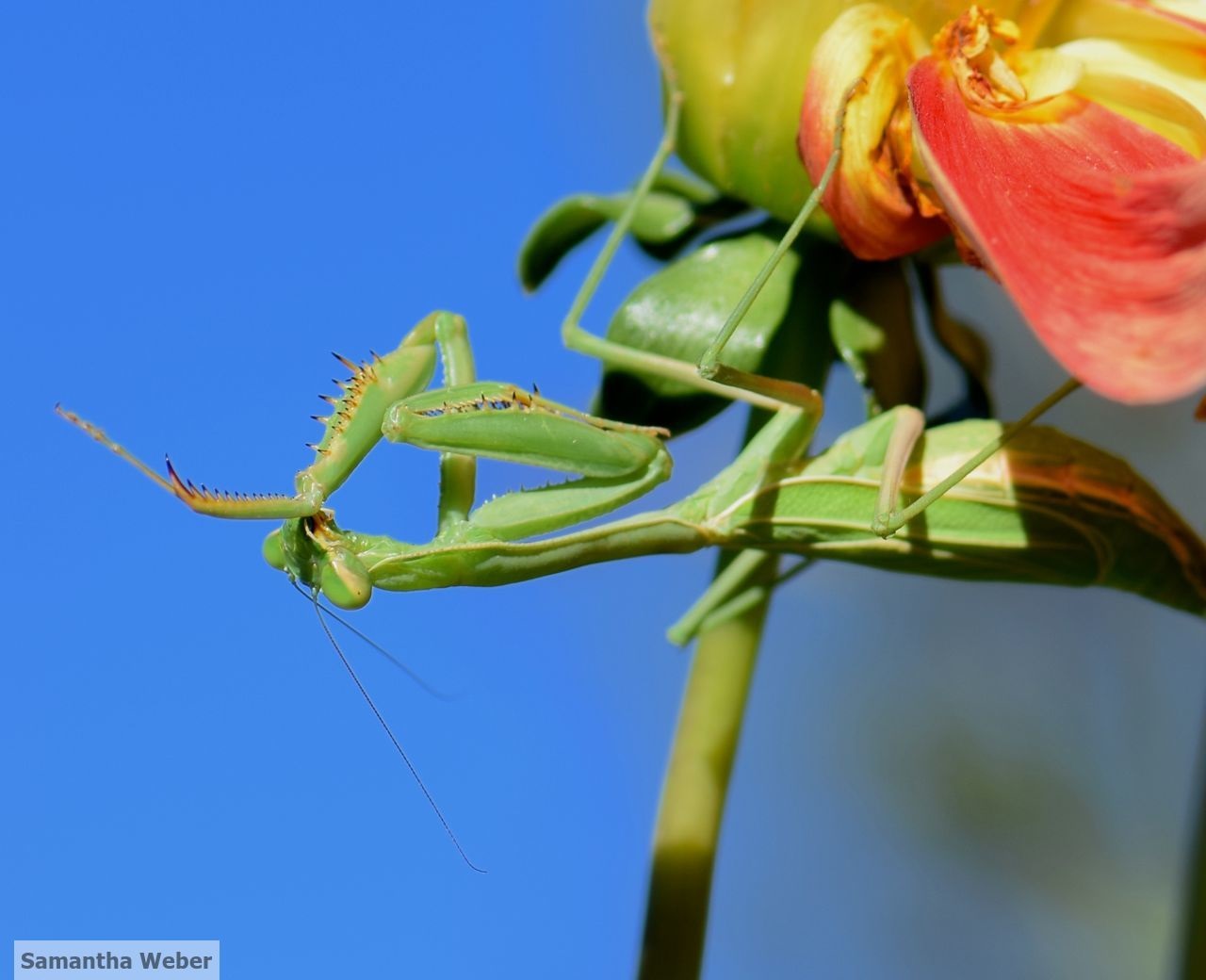
No matter what I do out there, I always return from my garden feeling calm and happy. Often I have a bunch of new photos in my camera, sometimes I’m excited to look up a bug I saw, and frequently I’ve got green beans and cherry tomatoes spilling out of my t-shirt-held-as-basket.
That evening we will eat tasty, healthy food from our garden, and that night I will sleep soundly because I’m pleasantly tired from the physical labor I’ve done in the garden that day.
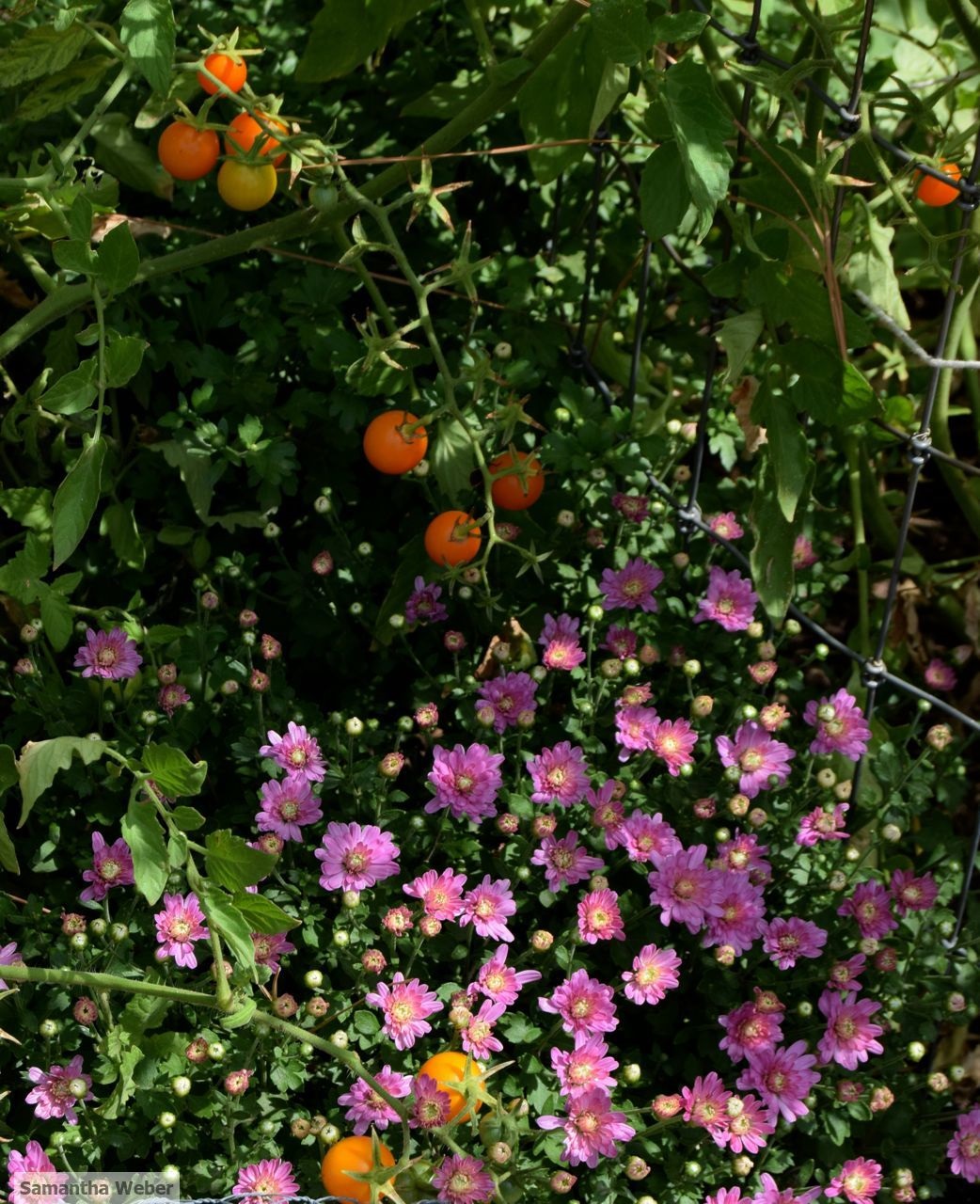
Good times.
So, I need to garden. But, I need a Smart Garden.
The following are what I’ve come up with (so far) for Smart Garden goals, benefits, strategies, what I’ve “done” and what I’m going “to do” next.
Smart Garden Goals
Wherever possible, plants will:
• be drought tolerant
• be heat tolerant
• work well in our USDA plant hardiness zone (find yours)
• benefit other plants and animals (attract pollinators, feed hummingbirds, fix nitrogen, provide cooling and water-conserving shade, etc.)
• do well without coddling (’cause I’m lazy)
• play well with others (e.g., other plants, wildlife)
• thrive with an organic approach
• be tasty or pretty or both
• be inexpensive
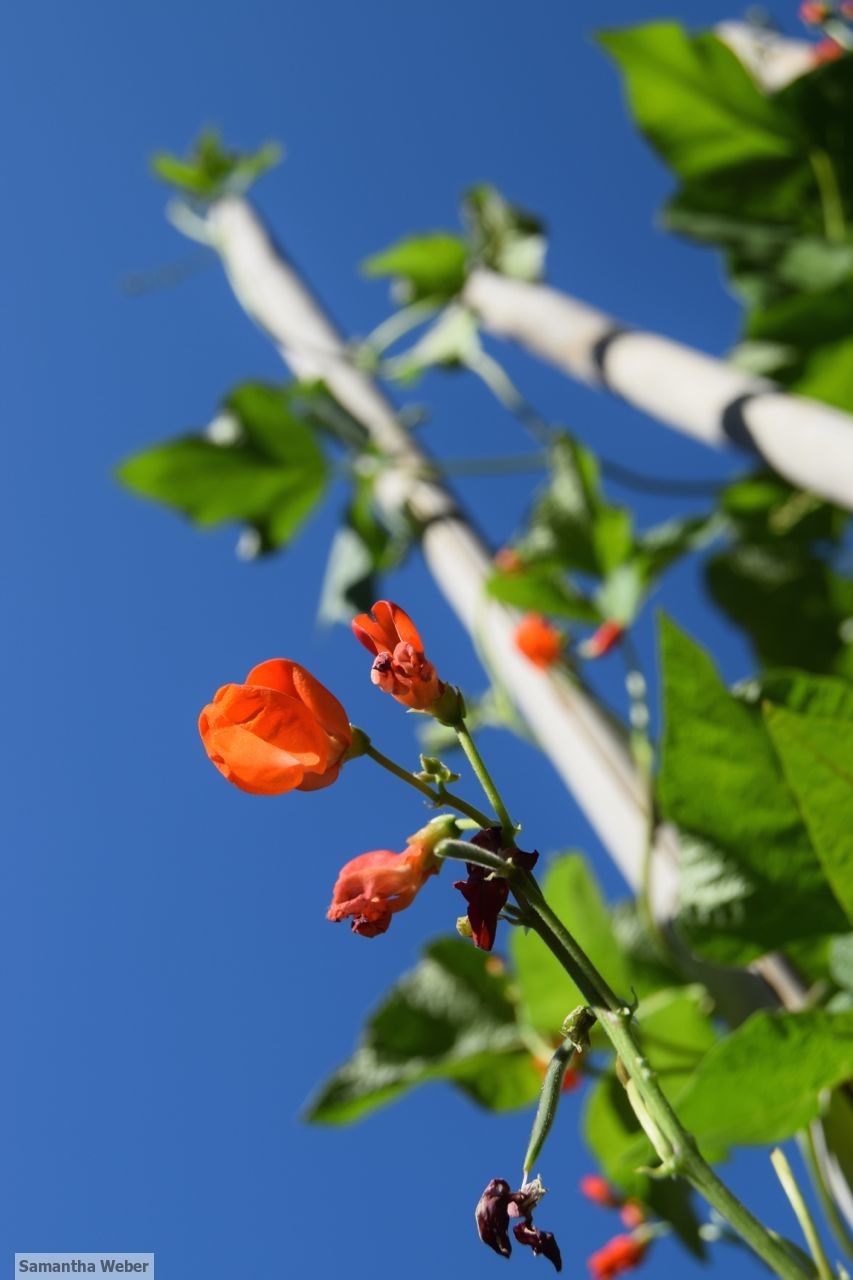 Smart Garden Benefits
Smart Garden Benefits
• You conserve water, that lovely substance that makes up about 60 percent of your body
• Not much weeding is required (via tightly packed plants and mulch);
• There’s pretty stuff to see, so you enjoy your garden;
• You eat fresh fruits and vegetables, thus filling your body with good things (and saving money); and
• Native wildlife will be attracted to this Smart Garden oasis so you will have plenty of Wildlife Ogling Opportunities (WOO, for short).
Smart Garden Strategy
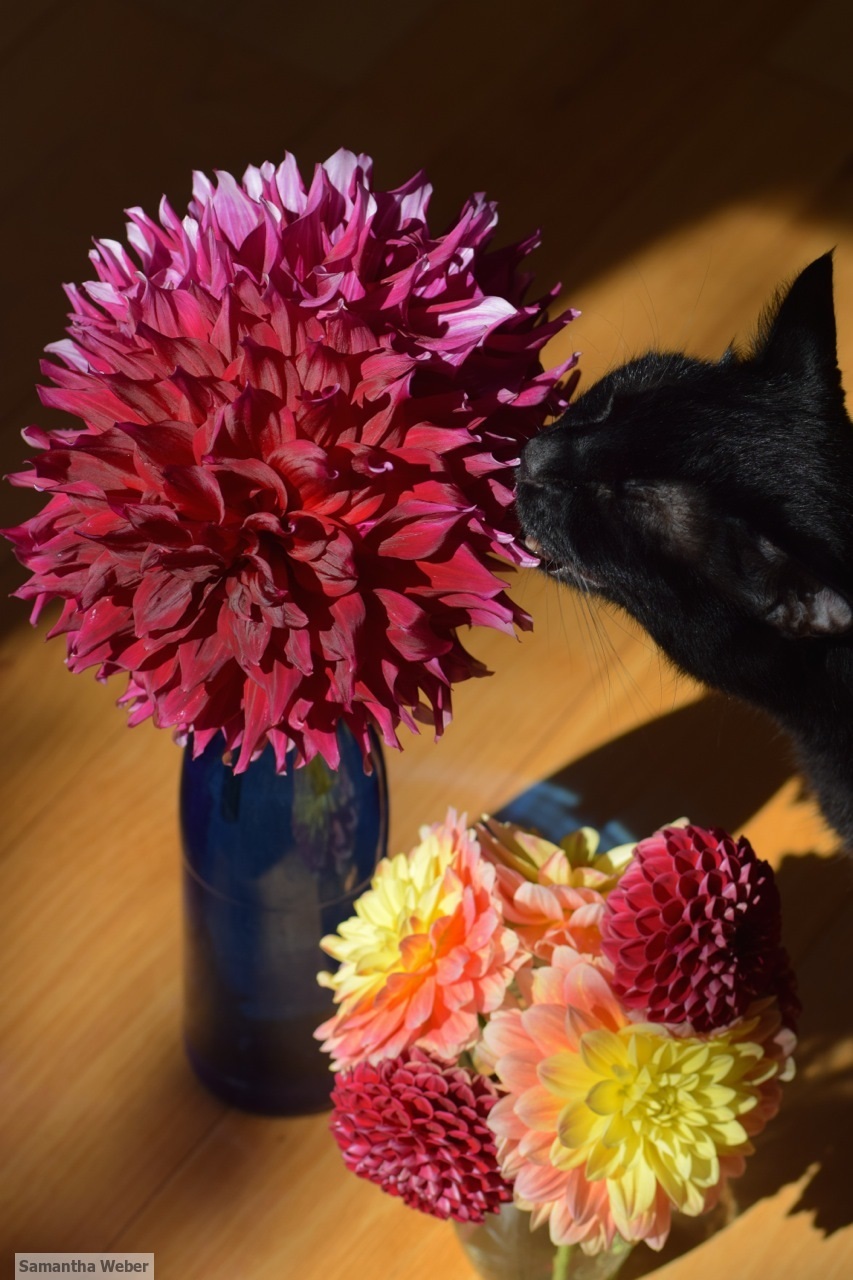
• Use drip irrigation and run them on timers;
• Pile up much mulch (where appropriate) to conserve water (bonus: good exercise);
• Plant climbing vines on the west side of the garden to provide afternoon shade from the scorchiest sun;
• Grow plants with similar needs (e.g., watering and feeding requirements) near each other;
• Sprinkle pollinator-attracting plants throughout the garden to keep bugs busy pollinating your food crops (bonus: makes garden prettier); and
• Use native plants more and more as time goes by (’cause they love it here, so are super easy to care for, once established, and benefit local wildlife the most).
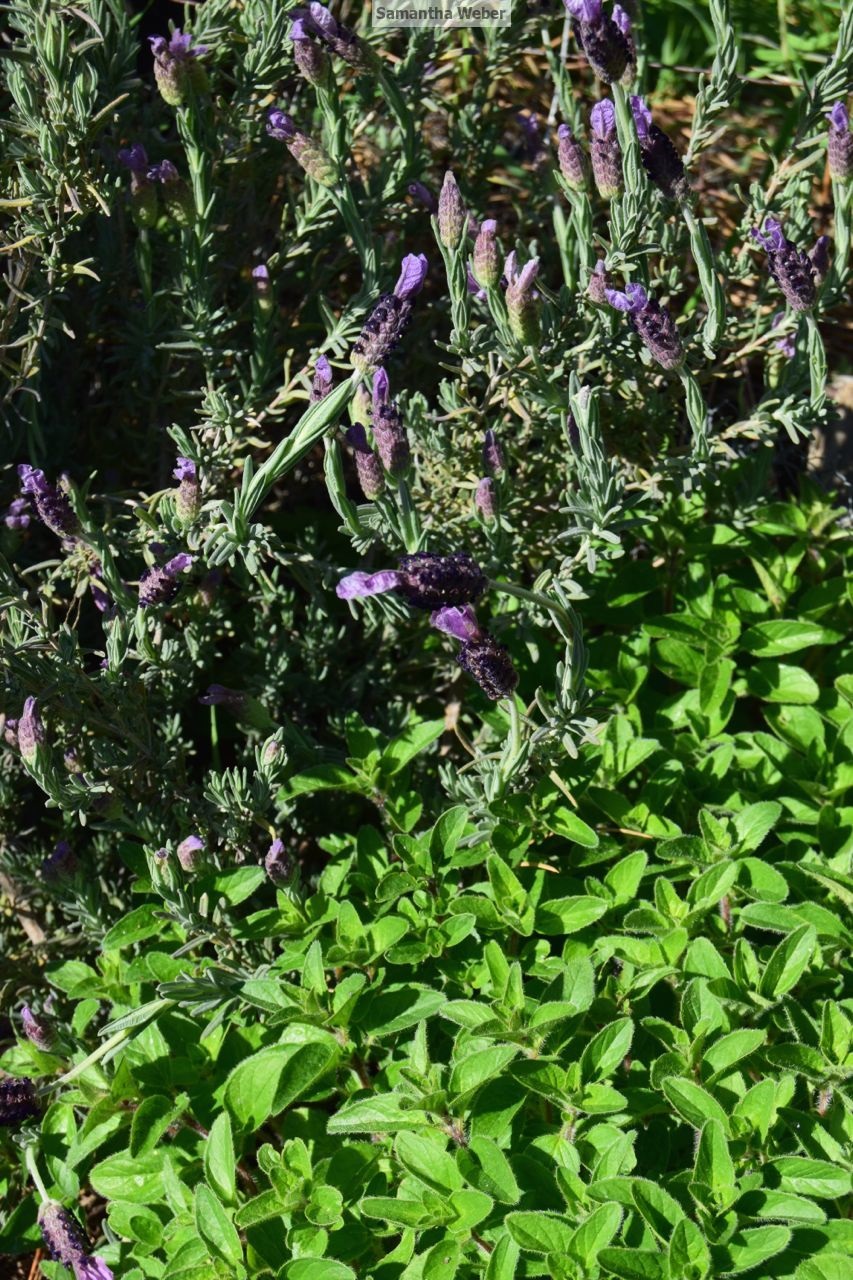
Smart Garden Steps I’ve Taken
1. Planted dahlias, not roses:
For showy-flower indulgence, I selected dahlias. ‘Cause dahlias are tough, glamorous creatures, and attract plenty of lovely bugs.
If I can find tough roses, I will gladly give them a try. But, dahlias are also pretty cheap, so they won last year.
2. Planted rosemary, oregano and lavender (perennial herbs).
These plants generally like our climate (Mediterranean), are useful herbs, and are not water-greedy. The rosemary is the happiest, and it blooms in the winter, which is a bonus (for bugs and for me) when precious few blooms are about.
3. Mulched much more than I had in the past. Bonus: makes your garden look better–apparently mulch is a flattering color for most plants.
4. Planted a pollinator-attracting seed mix, and hummingbird-friendly plants, too.
5. Planted vines on west side of garden to provide afternoon shade.
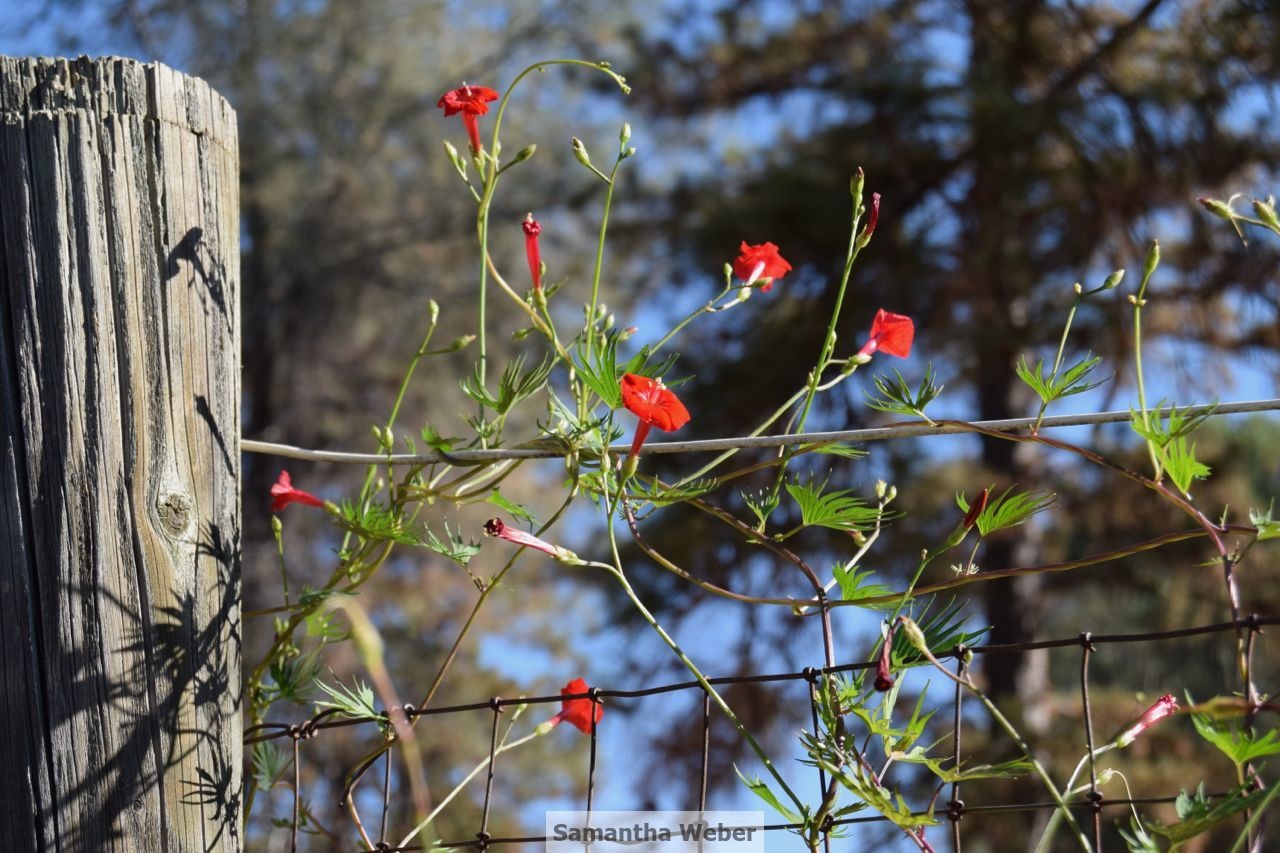
Smart Garden Steps I Will Take
1. Grow even more drought tolerant plants or varieties, natives where possible;
2. Grow plants that require little-to-no summer watering where possible;
3. Install drip irrigation (finally);
4. Plant things densely to conserve moisture (e.g., three sisters method); and
5. Mulch like mad. My goal this year is four to five inches deep, wherever mulching makes sense.
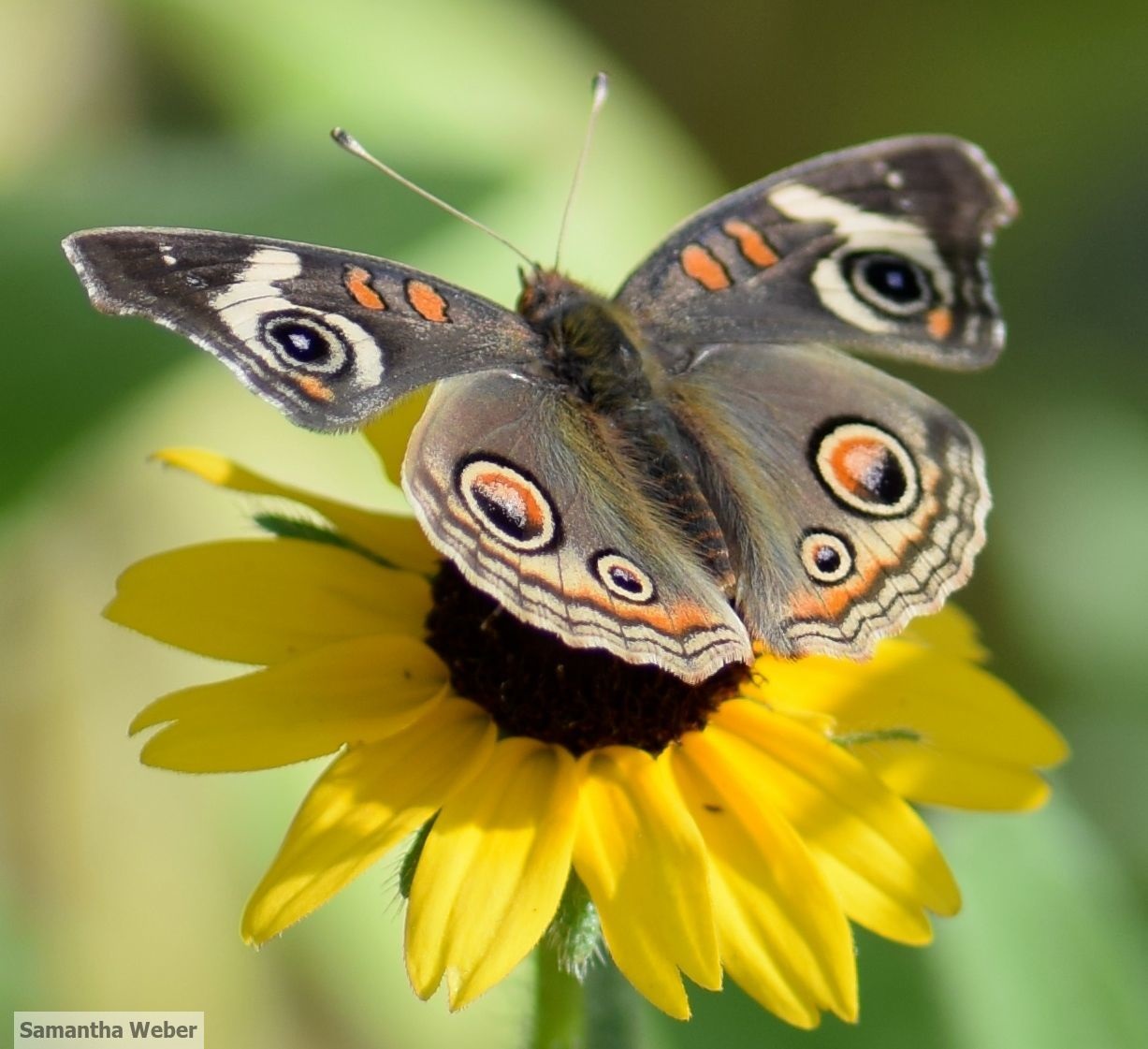
Conclusion:
There is none. It’s a process.
Like so much of life: I’ll keep learning, looking stuff up, trying new things, and (hopefully) doing better. ‘Cause that’s what we’re supposed to do, right?
And the alternative is just silly.
We have big brains, and using them helps keep us healthy longer, so why not flex our fabulous noggins to cleverly live large with plenty of water left over?
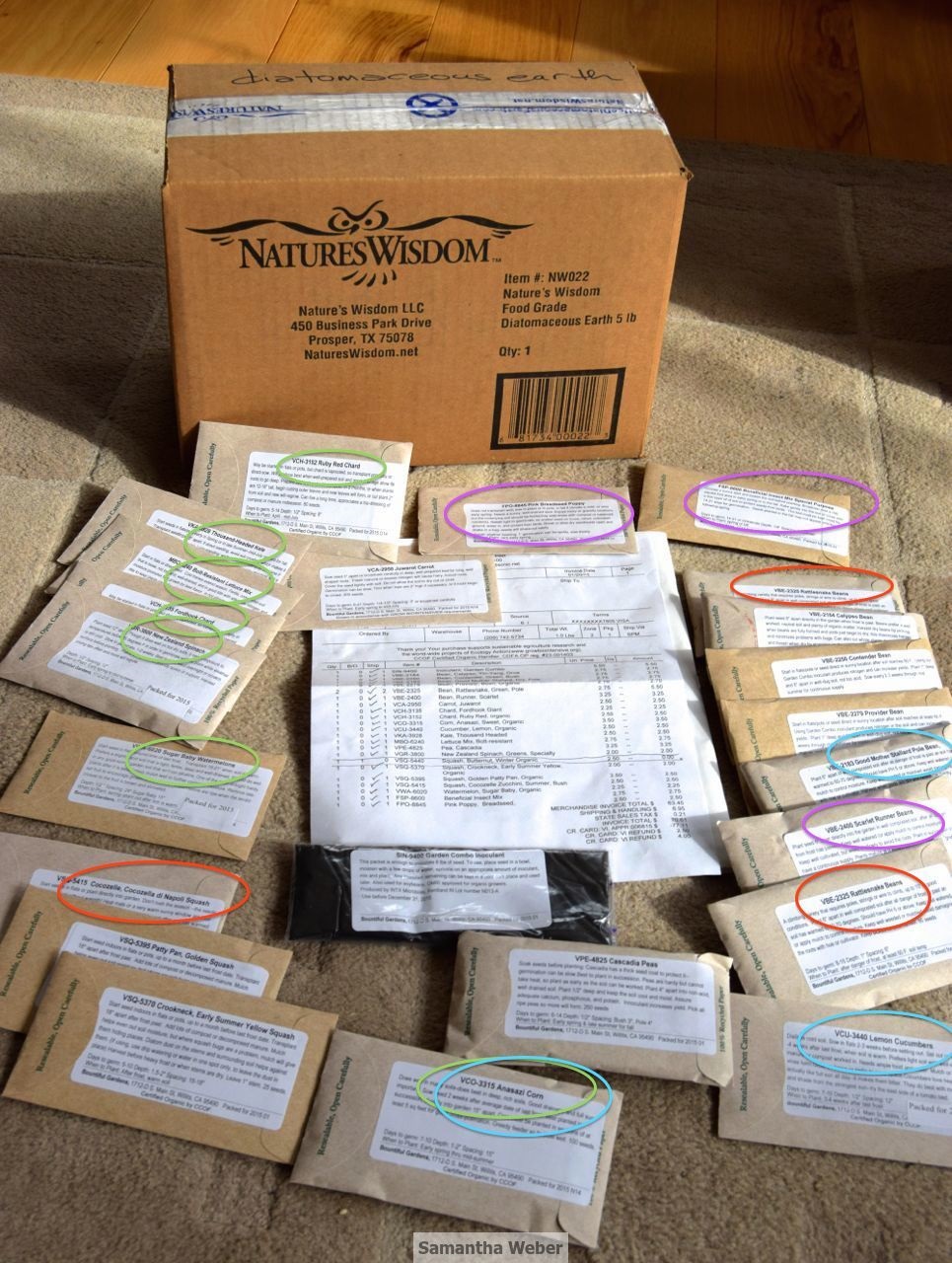
Anyone who can do that will be “cool” all summer long.
Samantha Weber has her own business where she promotes conservation through writing, editing, and photography; she also works in environmental consulting.
On her blog and social media (Twitter, Flickr, Tumblr) she is known as Samantha Biobabbler.
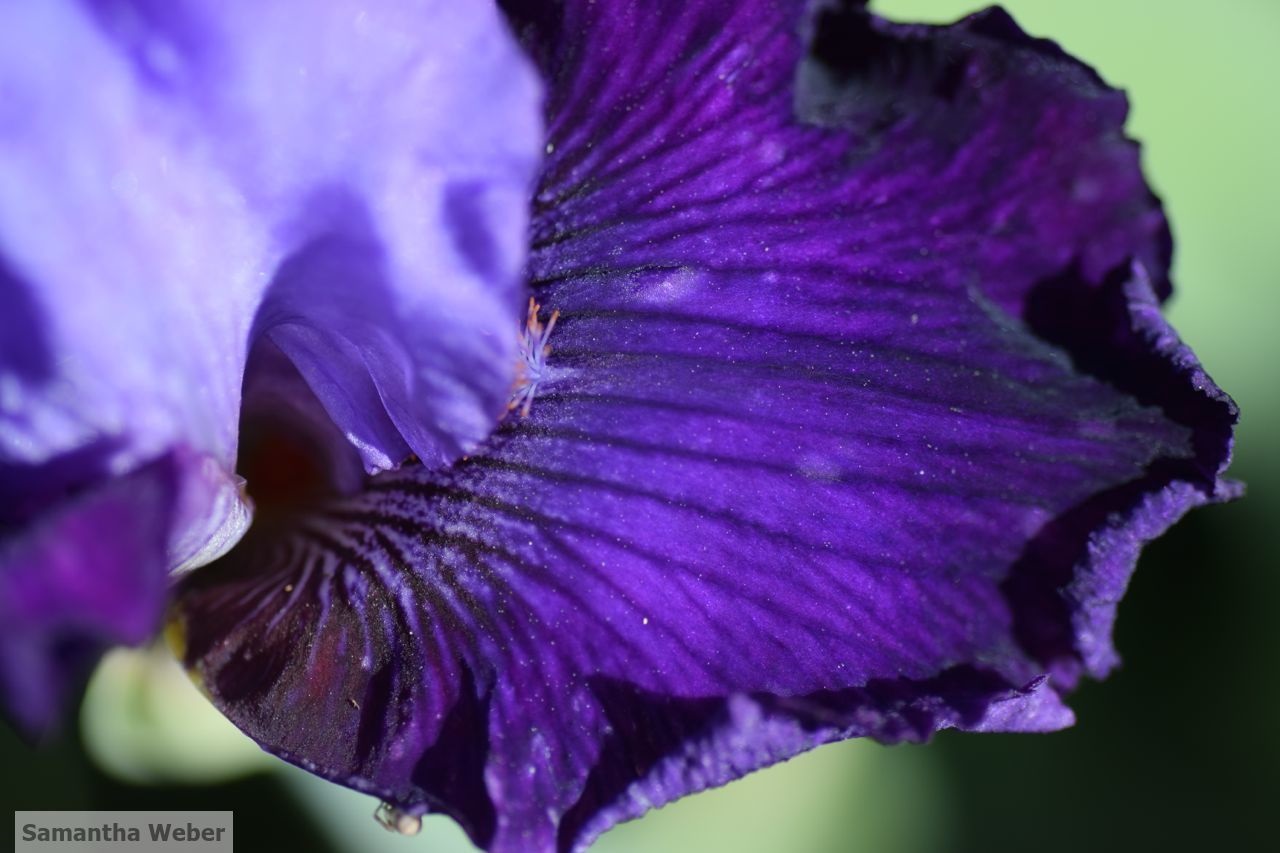
Samantha grew up in the Sierra Nevada foothills in northern California. Years later when she first drove to Mariposa and saw the oh-so-familiar habitat, she felt like she was coming home. Turns out, she was.

